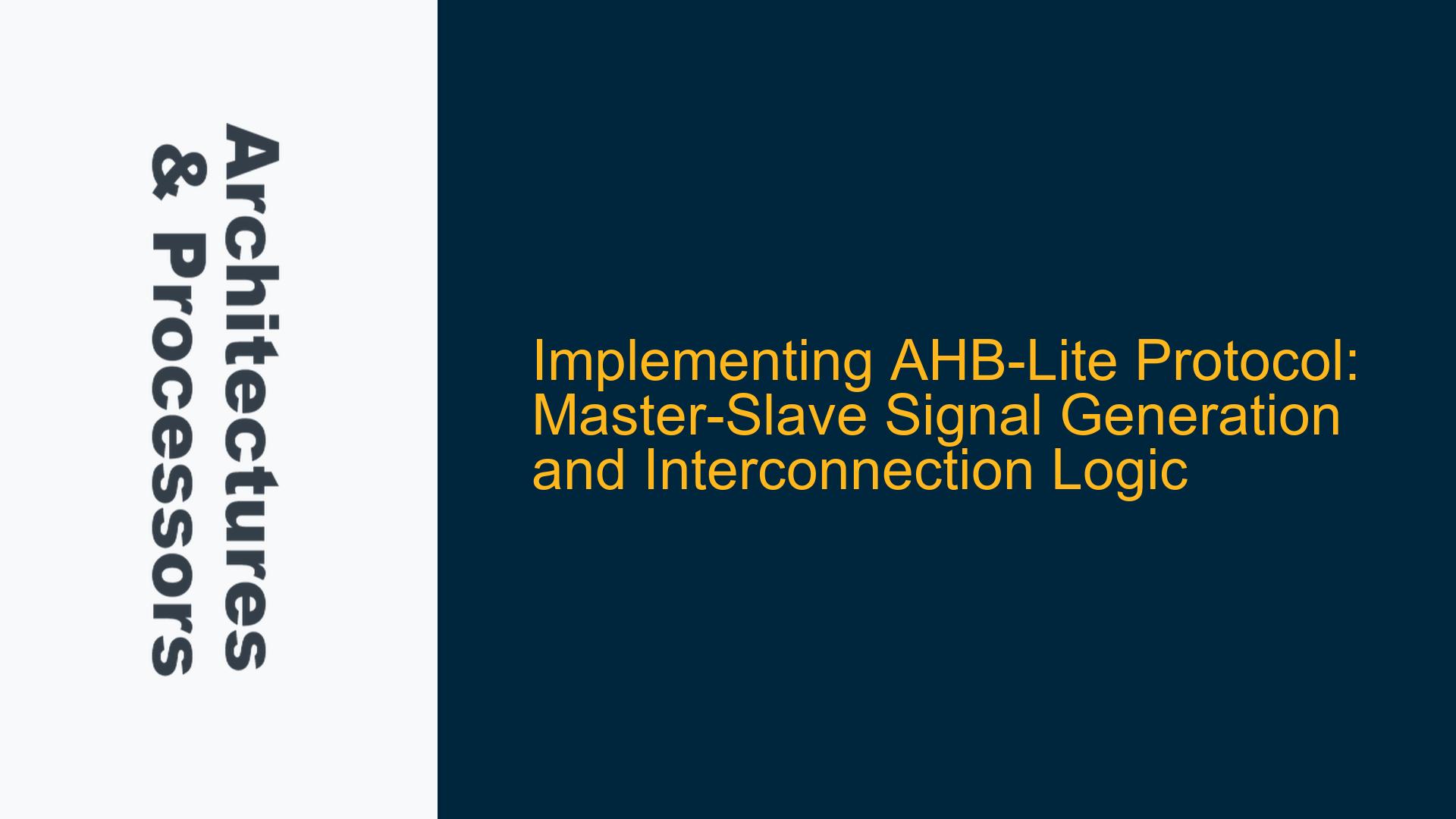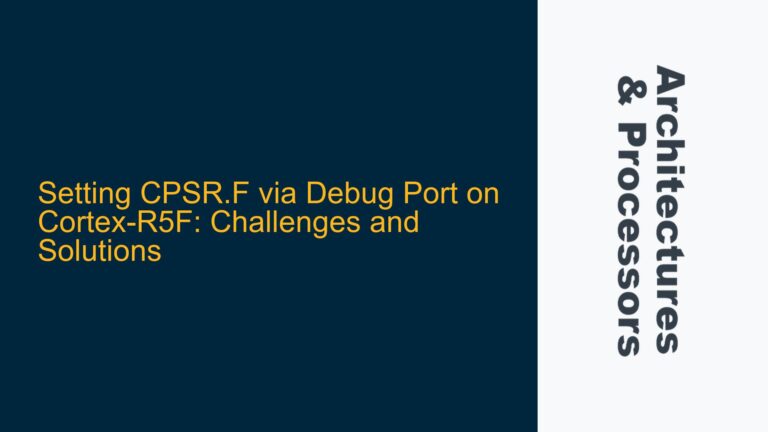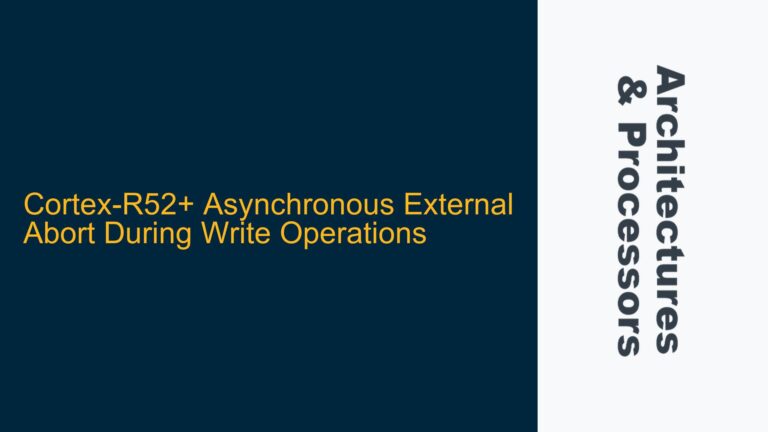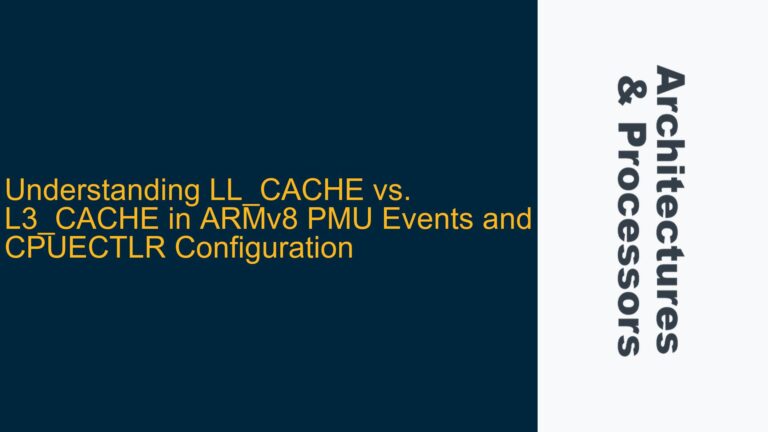AHB-Lite Protocol Signal Generation and Interconnection Challenges
The AHB-Lite protocol, a subset of the Advanced Microcontroller Bus Architecture (AMBA), is widely used in embedded systems for its simplicity and efficiency in handling data transfers between masters and slaves. However, implementing the AHB-Lite protocol in a custom microcontroller design presents several challenges, particularly in understanding where the H-signals originate and how to properly interconnect the processor, memory, and other peripherals. The core issue revolves around whether the processor should generate the AHB-Lite signals directly or if an external AHB-Lite chip should handle the conversion of non-AHB signals into AHB-compliant signals.
In a typical AHB-Lite system, the master (often the processor) initiates transactions, while the slaves (such as memory or peripherals) respond to these transactions. The H-signals, including HTRANS, HBURST, HADDR, HWDATA, HRDATA, HREADY, and HRESP, are critical for controlling these transactions. The confusion arises when deciding whether the processor should be designed to emit these signals directly or if an intermediary AHB-Lite chip should convert the processor’s native signals (e.g., LOAD/STORE) into AHB-Lite-compliant signals.
The first approach suggests that the AHB-Lite chip acts as a bridge, converting the processor’s native signals into AHB-Lite signals. This approach assumes that the AHB-Lite chip contains the master, slave, decoder, and multiplexer logic, effectively acting as a centralized hub for all bus transactions. The second approach proposes that the processor itself should be redesigned to include an AHB-Lite interface, emitting the H-signals directly. In this case, the AHB-Lite chip would only contain the decoder and multiplexer logic, simplifying its role to routing signals between the processor and memory.
Both approaches have their merits and trade-offs, and the choice between them depends on the specific design requirements, such as the complexity of the processor, the desired level of integration, and the overall system architecture. Understanding the implications of each approach is crucial for making an informed decision that aligns with the project’s goals.
Master-Slave Signal Conversion and Processor Integration
The decision to implement the AHB-Lite protocol hinges on the level of integration between the processor and the AHB-Lite chip. If the processor is designed with a LOAD/STORE architecture, it emits signals that are not inherently compatible with the AHB-Lite protocol. In this case, the AHB-Lite chip must include a Finite State Machine (FSM) to convert these signals into AHB-Lite-compliant H-signals. This FSM would handle the generation of HTRANS, HBURST, and other control signals based on the processor’s native signals.
The AHB-Lite chip in this scenario acts as a translator, bridging the gap between the processor’s native interface and the AHB-Lite protocol. This approach simplifies the processor design, as it does not need to be aware of the AHB-Lite protocol. However, it places additional complexity on the AHB-Lite chip, which must now include logic for signal conversion, arbitration, and decoding. This can lead to increased latency and potential bottlenecks, especially in systems with multiple masters or high-speed data transfers.
Alternatively, if the processor is redesigned to include an AHB-Lite interface, it would directly emit the H-signals required by the protocol. This approach eliminates the need for signal conversion within the AHB-Lite chip, reducing latency and simplifying the chip’s design. However, it requires significant modifications to the processor’s architecture, including the addition of an AHB-Lite interface module. This module would handle the generation of HTRANS, HBURST, and other control signals, as well as the management of data transfers between the processor and memory.
The choice between these two approaches depends on several factors, including the complexity of the processor, the desired performance characteristics, and the overall system architecture. If the processor is already complex and adding an AHB-Lite interface would significantly increase its complexity, the first approach may be more feasible. Conversely, if the processor is relatively simple and can accommodate the additional logic required for an AHB-Lite interface, the second approach may offer better performance and scalability.
Implementing AHB-Lite Signal Generation and Interconnection Logic
Implementing the AHB-Lite protocol requires careful consideration of the signal generation and interconnection logic. If the decision is made to use an AHB-Lite chip for signal conversion, the chip must include a Finite State Machine (FSM) to handle the generation of HTRANS, HBURST, and other control signals. The FSM would take the processor’s native signals as input and generate the corresponding AHB-Lite signals as output. This FSM must be designed to handle all possible transaction types, including single transfers, burst transfers, and idle states.
The AHB-Lite chip must also include logic for decoding the address signals (HADDR) and routing data transfers to the appropriate slave. This involves implementing a decoder that can determine which slave is being accessed based on the address and generating the appropriate select signals (HSEL) for each slave. Additionally, the chip must include a multiplexer to route the data from the selected slave back to the master.
If the processor is redesigned to include an AHB-Lite interface, the implementation becomes more straightforward. The processor’s AHB-Lite interface module would handle the generation of HTRANS, HBURST, and other control signals, as well as the management of data transfers. This module would also include logic for decoding the address signals and routing data transfers to the appropriate slave. The AHB-Lite chip in this scenario would only need to include the decoder and multiplexer logic, simplifying its design and reducing latency.
In both cases, it is essential to ensure that the timing requirements of the AHB-Lite protocol are met. This includes ensuring that the HREADY signal is asserted correctly to indicate that a transfer has completed and that the HRESP signal is used to indicate any errors that occur during a transfer. Additionally, the system must be designed to handle wait states, where a slave may need additional time to complete a transfer.
To summarize, the implementation of the AHB-Lite protocol involves careful consideration of the signal generation and interconnection logic. Whether the processor is designed to emit AHB-Lite signals directly or an external AHB-Lite chip is used for signal conversion, the system must be designed to meet the timing and functional requirements of the protocol. This includes implementing the necessary logic for signal generation, address decoding, data routing, and error handling. By carefully considering these factors, it is possible to design a system that efficiently implements the AHB-Lite protocol and meets the performance requirements of the application.
Detailed Analysis of AHB-Lite Signal Generation and Interconnection
Signal Generation in AHB-Lite Protocol
The AHB-Lite protocol relies on a set of well-defined signals to control data transfers between masters and slaves. These signals include HTRANS, HBURST, HADDR, HWDATA, HRDATA, HREADY, and HRESP. Each of these signals plays a critical role in ensuring that data transfers are executed correctly and efficiently.
HTRANS (Transfer Type) indicates the type of transfer being initiated by the master. It can take on values such as IDLE, BUSY, NONSEQ, and SEQ, which indicate whether the transfer is idle, busy, non-sequential, or sequential. HBURST (Burst Type) specifies the type of burst transfer, such as SINGLE, INCR, WRAP4, and so on. HADDR (Address) is the address of the transfer, while HWDATA (Write Data) and HRDATA (Read Data) are the data being written to or read from the slave. HREADY (Transfer Ready) indicates whether the slave is ready to complete the transfer, and HRESP (Transfer Response) indicates the status of the transfer, such as OKAY, ERROR, or RETRY.
In the first approach, where the AHB-Lite chip handles signal conversion, the FSM within the chip must generate these signals based on the processor’s native signals. For example, if the processor initiates a LOAD operation, the FSM must generate the appropriate HTRANS, HBURST, and HADDR signals to initiate a read transfer on the AHB-Lite bus. Similarly, if the processor initiates a STORE operation, the FSM must generate the appropriate signals to initiate a write transfer.
In the second approach, where the processor includes an AHB-Lite interface, the processor itself must generate these signals. This requires the addition of an AHB-Lite interface module within the processor, which handles the generation of HTRANS, HBURST, and other control signals based on the processor’s internal state. This module must also handle the decoding of address signals and the routing of data transfers to the appropriate slave.
Interconnection Logic in AHB-Lite Protocol
The interconnection logic in an AHB-Lite system is responsible for routing data transfers between the master and the appropriate slave. This involves decoding the address signals (HADDR) to determine which slave is being accessed and generating the appropriate select signals (HSEL) for each slave. The interconnection logic must also include a multiplexer to route the data from the selected slave back to the master.
In the first approach, where the AHB-Lite chip handles signal conversion, the chip must include the decoder and multiplexer logic. The decoder takes the address signals (HADDR) as input and generates the select signals (HSEL) for each slave. The multiplexer then routes the data from the selected slave back to the master. This approach simplifies the design of the processor, as it does not need to include the decoder and multiplexer logic. However, it places additional complexity on the AHB-Lite chip, which must now include logic for signal conversion, arbitration, and decoding.
In the second approach, where the processor includes an AHB-Lite interface, the processor itself must include the decoder and multiplexer logic. This requires the addition of an AHB-Lite interface module within the processor, which handles the decoding of address signals and the routing of data transfers to the appropriate slave. This approach simplifies the design of the AHB-Lite chip, as it only needs to include the decoder and multiplexer logic. However, it places additional complexity on the processor, which must now include the AHB-Lite interface module.
Timing Considerations in AHB-Lite Protocol
Timing is a critical aspect of the AHB-Lite protocol, as it ensures that data transfers are executed correctly and efficiently. The HREADY signal plays a key role in timing, as it indicates whether the slave is ready to complete the transfer. If the slave is not ready, it can assert the HREADY signal low, causing the master to wait until the slave is ready to complete the transfer. This is known as a wait state.
In both approaches, it is essential to ensure that the timing requirements of the AHB-Lite protocol are met. This includes ensuring that the HREADY signal is asserted correctly to indicate that a transfer has completed and that the HRESP signal is used to indicate any errors that occur during a transfer. Additionally, the system must be designed to handle wait states, where a slave may need additional time to complete a transfer.
In the first approach, where the AHB-Lite chip handles signal conversion, the chip must include logic to handle wait states and ensure that the HREADY signal is asserted correctly. This logic must be designed to handle all possible transaction types, including single transfers, burst transfers, and idle states.
In the second approach, where the processor includes an AHB-Lite interface, the processor itself must include logic to handle wait states and ensure that the HREADY signal is asserted correctly. This logic must be designed to handle all possible transaction types, including single transfers, burst transfers, and idle states.
Error Handling in AHB-Lite Protocol
Error handling is another critical aspect of the AHB-Lite protocol, as it ensures that any errors that occur during a transfer are handled correctly. The HRESP signal is used to indicate the status of the transfer, such as OKAY, ERROR, or RETRY. If an error occurs, the slave can assert the HRESP signal to indicate the error, and the master can take appropriate action, such as retrying the transfer or aborting the transfer.
In both approaches, it is essential to ensure that the error handling requirements of the AHB-Lite protocol are met. This includes ensuring that the HRESP signal is used correctly to indicate any errors that occur during a transfer and that the master can take appropriate action based on the error.
In the first approach, where the AHB-Lite chip handles signal conversion, the chip must include logic to handle errors and ensure that the HRESP signal is asserted correctly. This logic must be designed to handle all possible error conditions, including data corruption, address errors, and timeouts.
In the second approach, where the processor includes an AHB-Lite interface, the processor itself must include logic to handle errors and ensure that the HRESP signal is asserted correctly. This logic must be designed to handle all possible error conditions, including data corruption, address errors, and timeouts.
Performance Considerations in AHB-Lite Protocol
Performance is a key consideration in any AHB-Lite system, as it determines how efficiently data transfers are executed. The choice between the two approaches can have a significant impact on the performance of the system. In the first approach, where the AHB-Lite chip handles signal conversion, the additional logic required for signal conversion, arbitration, and decoding can introduce latency and potential bottlenecks, especially in systems with multiple masters or high-speed data transfers.
In the second approach, where the processor includes an AHB-Lite interface, the elimination of signal conversion logic within the AHB-Lite chip can reduce latency and improve performance. However, this approach requires significant modifications to the processor’s architecture, which can increase its complexity and potentially impact its performance.
In both approaches, it is essential to carefully consider the performance requirements of the system and design the AHB-Lite protocol implementation accordingly. This includes optimizing the signal generation and interconnection logic to minimize latency and maximize throughput, as well as ensuring that the system can handle the required data transfer rates.
Conclusion
Implementing the AHB-Lite protocol in a custom microcontroller design involves careful consideration of the signal generation and interconnection logic. The choice between using an AHB-Lite chip for signal conversion or redesigning the processor to include an AHB-Lite interface depends on several factors, including the complexity of the processor, the desired performance characteristics, and the overall system architecture. Both approaches have their merits and trade-offs, and the decision should be based on a thorough analysis of the specific design requirements.
In the first approach, the AHB-Lite chip acts as a bridge, converting the processor’s native signals into AHB-Lite-compliant signals. This approach simplifies the processor design but places additional complexity on the AHB-Lite chip, which must include logic for signal conversion, arbitration, and decoding. This can lead to increased latency and potential bottlenecks, especially in systems with multiple masters or high-speed data transfers.
In the second approach, the processor is redesigned to include an AHB-Lite interface, directly emitting the H-signals required by the protocol. This approach eliminates the need for signal conversion within the AHB-Lite chip, reducing latency and simplifying the chip’s design. However, it requires significant modifications to the processor’s architecture, including the addition of an AHB-Lite interface module.
Regardless of the approach chosen, it is essential to ensure that the timing and error handling requirements of the AHB-Lite protocol are met. This includes implementing the necessary logic for signal generation, address decoding, data routing, and error handling. By carefully considering these factors, it is possible to design a system that efficiently implements the AHB-Lite protocol and meets the performance requirements of the application.
In conclusion, the implementation of the AHB-Lite protocol requires a deep understanding of the signal generation and interconnection logic, as well as careful consideration of the performance and timing requirements. By carefully analyzing the specific design requirements and choosing the appropriate approach, it is possible to design a system that efficiently implements the AHB-Lite protocol and meets the performance requirements of the application.






